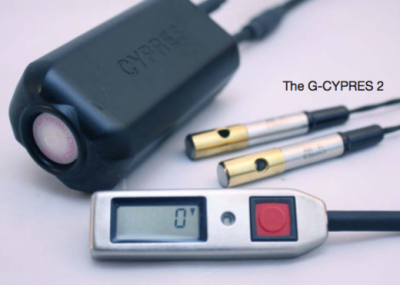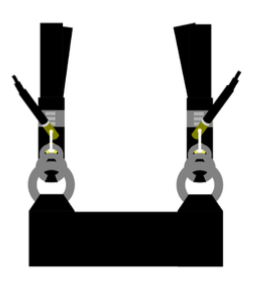Extreme Canopy Flying
Friday, October 9, 2015
- Team CYPRES
- 10/09/15
- 0
- Custom Solutions
Project XCF: The Smallest Parachute in History
You are currently viewing a placeholder content from YouTube. To access the actual content, click the button below. Please note that doing so will share data with third-party providers.
Trying to land the smallest parachute in history requires specialized planning to ensure the desired outcome. To ensure safety, having a customized AAD for this project was necessary.
CYPRES has built a reputation for precision and reliability. With our success of the Red Bull Stratos project, Ernesto Gainza wanted us involved to ensure his safety during the XCF Project.
The Challenge
The major challenge with small canopies is their dramatically changing flight and landing characteristics. With a 35sq.ft. canopy, the chance of a spinning malfunction is real which can result in an instantaneous loss of consciousness. The spinning can push the vertical velocity to dangerous speeds.
canopy, the chance of a spinning malfunction is real which can result in an instantaneous loss of consciousness. The spinning can push the vertical velocity to dangerous speeds.
Additionally, if the malfunction caused the spinning main to be on one side and Ernesto on the opposite, this may create a rotor shape, thus building uplift forces and slowing Ernesto below the Speed CYPRES activation of 46 m/s. This scenario would result in the Speed CYPRES not cutting the reserve loop. To rescue Ernesto from a spinning situation, this demands an automatic cutaway mechanism to include this possible parameter.
The other main challenge involves the speed of a 35sq.ft canopy which is normally functioning. With such a small parachute, it is possible that the descent rate would be above 46 m/s. Normally, a reading above 46m/s would initiate the cutter, but of course, this is not something we’d want to happen if the parachute is flying correctly.
Lastly, Ernesto would be using three parachutes. The record 35sq.ft canopy, an 87 sq.ft., main and a more traditionally sized reserve parachute.
You are currently viewing a placeholder content from YouTube. To access the actual content, click the button below. Please note that doing so will share data with third-party providers.
The Solution

As seen in the diagram to the left, two separate cutters would be used at the three ring system to cut away the main 35 sq.ft parachute. The purpose of having each CYPRES cutter attached at the three ring would help reduce continuous spinning after the cutaway which would lead to severe line twists under canopy number 2, thus causing another spinning malfunction. The reserve parachute would use a traditional Speed CYPRES 2.
Knowing When To Cutaway
A traditional CYPRES measures altitude and speed to correctly cut the reserve loop. In the case of a high-speed spinning malfunction under such a small canopy, these two parameters are not sufficient. Because of our experience with the Red Bull Stratos project, we were able to take the G-Force data collected and apply it to what Ernesto would be experiencing. Rather than using altitude and speed, G-Forces would be the measurement for cutting the reserve loop during a spinning malfunction under the 35sq.ft. canopy.
If Ernesto was experiencing above 5G’s, the now named, G-CYPRES 2 would initiate the 2-pin cutters to active the 3-ring release. After the cutaway of parachute number one (35sq.ft.), Ernesto would then manually deploy his second main. If he were unconscious, the Speed CYPRES 2 would initiate the reserve parachute.
You are currently viewing a placeholder content from YouTube. To access the actual content, click the button below. Please note that doing so will share data with third-party providers.
Adventure, Tips, and Adrenaline
Subscribe to Our Newsletter
By signing up for our newsletter you declare to agree with our privacy policy.

